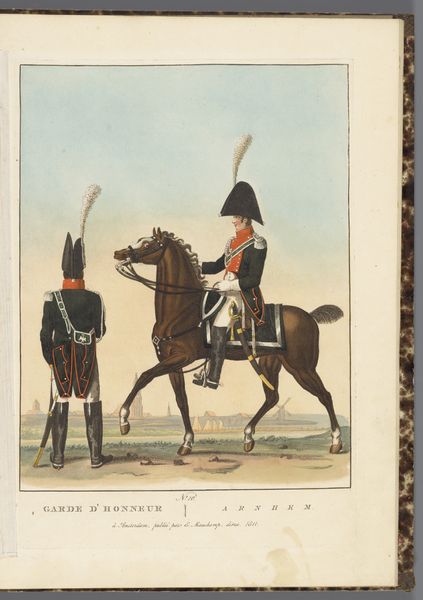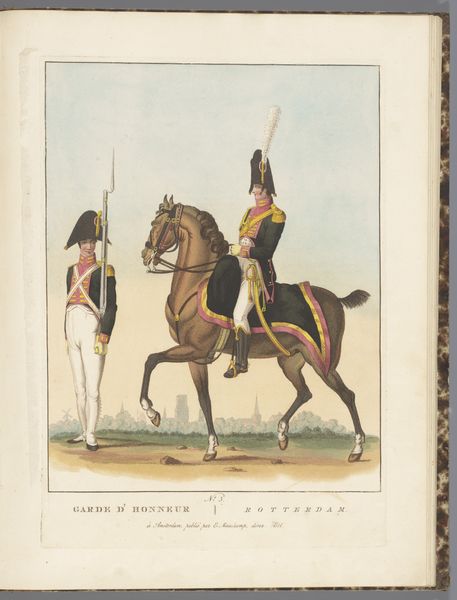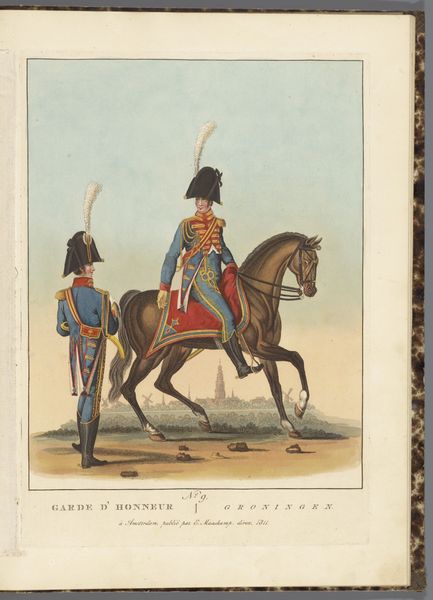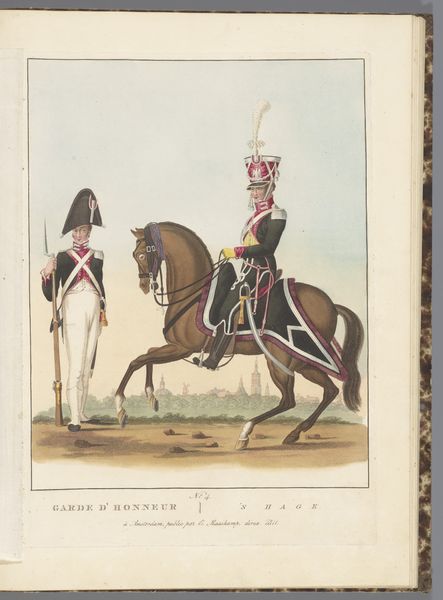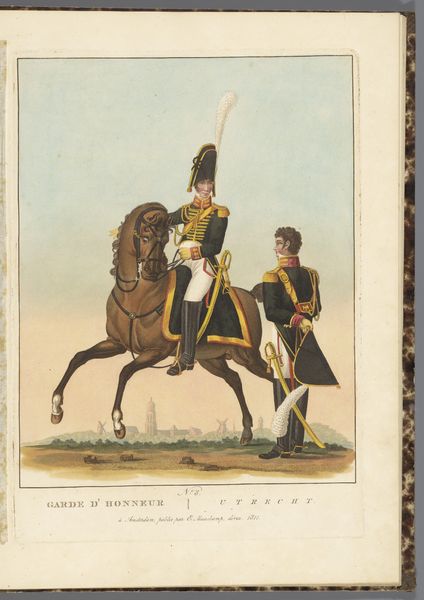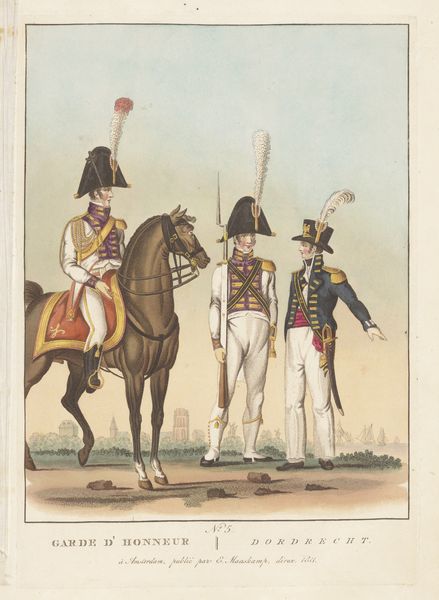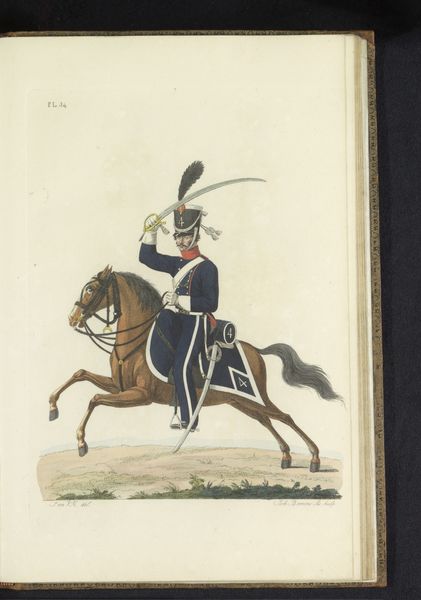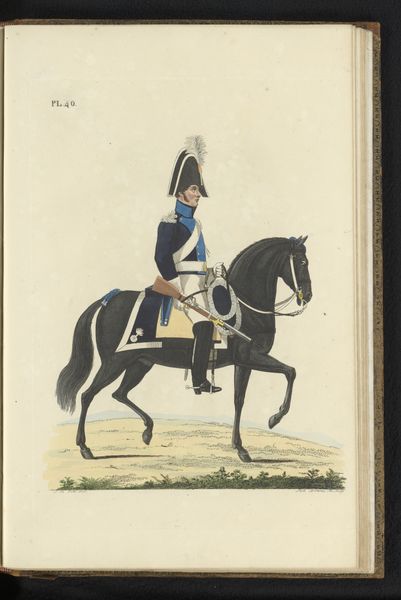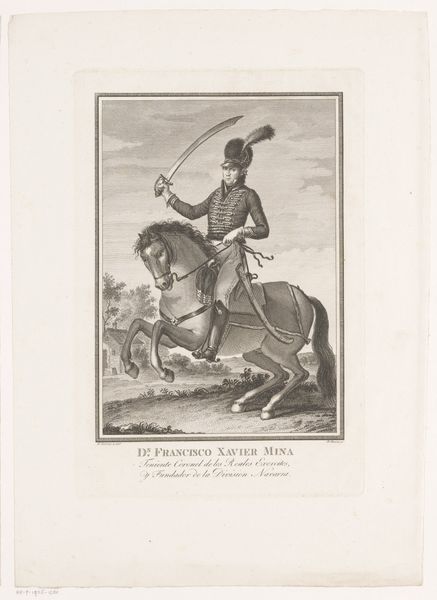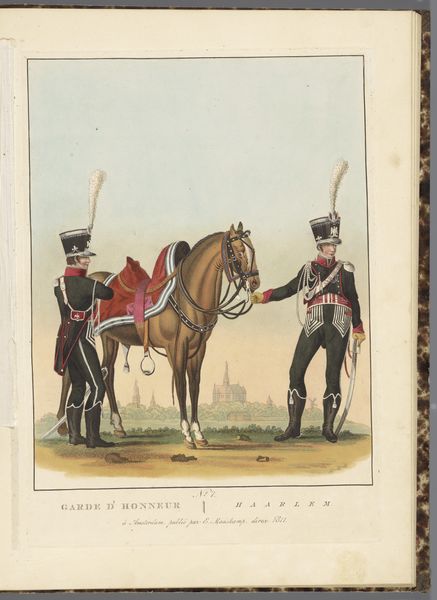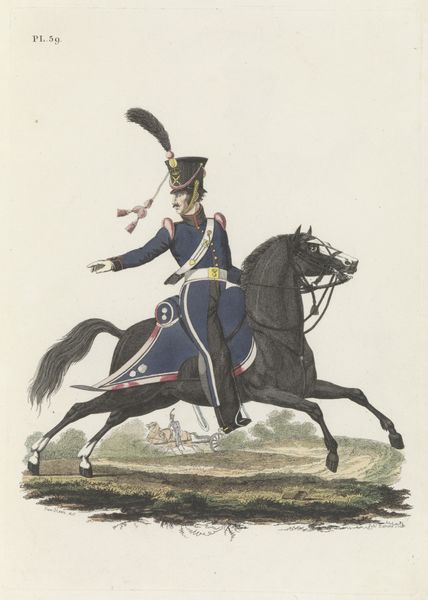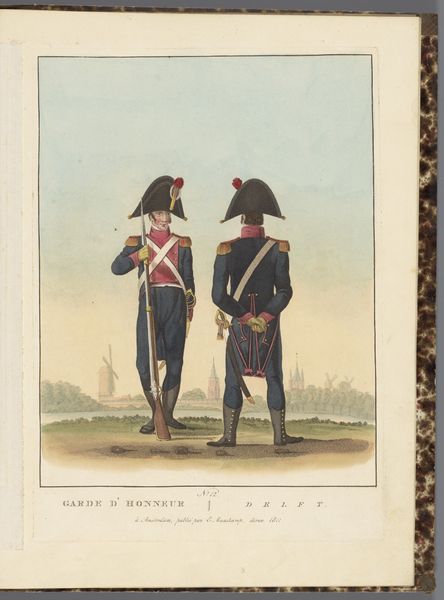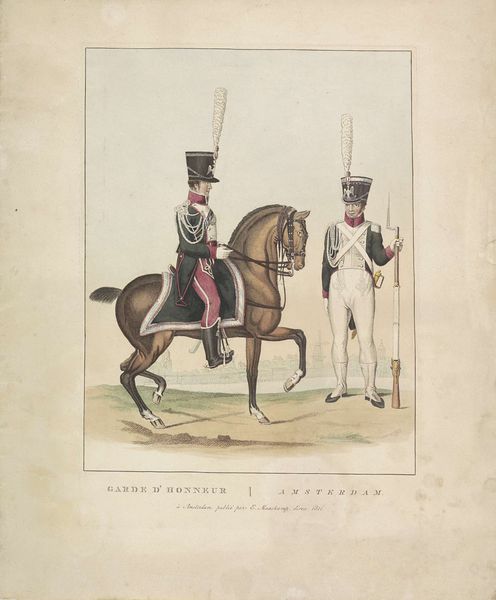
drawing, watercolor, pencil
#
portrait
#
drawing
#
water colours
#
watercolor
#
coloured pencil
#
pencil
#
genre-painting
#
history-painting
#
academic-art
#
miniature
Dimensions: height 325 mm, width 230 mm
Copyright: Rijks Museum: Open Domain
Editor: This is "Erewacht te Leiden, 1811", an anonymous watercolor and pencil drawing over miniature, housed in the Rijksmuseum. It feels very precise, almost like a document rather than something expressive. What story do you see embedded in these materials? Curator: It's fascinating how the artist used relatively accessible materials - watercolor, pencil, colored pencil - to depict a scene of power and honor. Consider the implications of using such quotidian tools to represent this military unit, the ‘guard of honour’—what does it say about the social fabric and the production of imagery in 1811 Leiden? Editor: That's a great point! It's not oil on canvas, like a grand history painting. It's a drawing, which feels… more democratic, maybe? Curator: Precisely! And it prompts questions about the intended audience and the artwork’s function. Was this meant for personal enjoyment, perhaps circulating within a particular social class? Or did these readily available materials enable broader access to representations of power? Who had the power to make images? Editor: I hadn't thought about it that way, focusing on who got to represent whom. How the relative inexpensiveness of the materials democratises access in ways oil on canvas wouldn’t. Curator: Exactly. Furthermore, analyzing the labor involved – the painstaking detail achieved with these humble materials - brings us closer to appreciating the artist’s skill and the social conditions of art production. This connects it less to the sphere of the art and more to the material reality, which provides greater art access. Editor: It's a reminder that art is never just about the final image, but also about who makes it and how it circulates in society. It feels less "high art" now, thinking of it as a product of a particular labor, class, and social power structure. Curator: And hopefully it underscores the value of looking beyond aesthetic conventions and thinking about art as a product shaped by materials, labor, and the flow of capital.
Comments
No comments
Be the first to comment and join the conversation on the ultimate creative platform.
